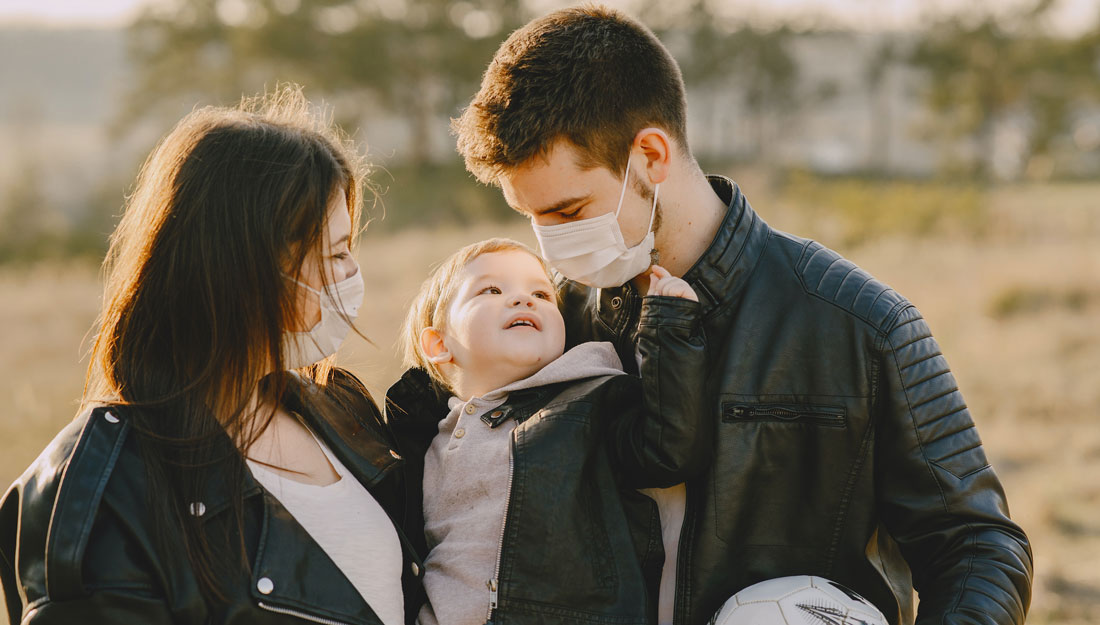- Kala McCain
- Community, COVID-19, Healthy Living, Nursing, Show on VR homepage
Remaining positive (and safe) as life returns to “normal”
Mental health professor offers advice for reducing anxiety as you navigate uncertainty and challenges returning to "normal" activities amid COVID-19

When the COVID-19 pandemic reached Texas, normal activities came to a sudden halt. A family outing to the park, a sit-down dinner at a favorite restaurant or trip to the grocery store suddenly came with risk and for many, a sense of sincere anxiety. Managing recommendations to maintain personal health—and that of complete strangers—presents challenges, some of which are new as life becomes “normal” again. As routines are re-established, daily outings increase and social gatherings begin to resurface, there are ways to help reduce stress and embrace the opportunities to regain a sense of normalcy.
Cody Bruce, MSN, RN, CNE, clinical assistant professor at Texas A&M College of Nursing and mental health expert shares insight. “We have never been in this situation before, and anxiety is a normal response to the unknown. So first, take a moment and validate those feelings. Being intentional in protecting the mental health of ourselves and our families is vital at this time,” Bruce said.
Different people respond to stressors in different ways and Bruce explains that research validates these findings. “Some will take on new tasks or clean their homes from top to bottom while others will binge watch Netflix from their couch to gain a sense of calm,” he said. “Both are healthy responses to stress. It is as beneficial for some of us to start a new hobby as it is for others to do less.”
Establish a routine
To cope with continuous change of things outside your control, Bruce recommends establishing, or re-establishing, a routine. Many people are working from home with their families, spending a significantly greater amount of time together while balancing work and personal responsibilities.
“Consider scheduling a time to have lunch together as a family. After work hours end, make it a point to put away your computer, your tablet, anything work related, and do something for yourself or with your family,” Bruce said. “It is crucial to create an appropriate work-life balance during this time, as many people are finding they are working longer hours from home than when they were at the office. Research indicates that experiences, not things, have the most significant impact on our level of sustained happiness.”
Care for yourself
Bruce reiterates that creating balance means you should make time for yourself, individually. “Find a self-care activity and incorporate it into your daily schedule. We know that many health care professionals suffer from compassion fatigue because countless hours are spent caring for others but time is not taken to care for themselves,” Bruce said.
Self-care looks different for everyone, ranging from activities to experience nature or art, yoga or meditation, or a combination of mental and physical activities. “Self-care results in positive energy and vitality, enhanced coping and stress reduction,” Bruce said. “While social distancing makes it more difficult to engage in your regular activities, many free apps designed to positively impact our mental health are available to help.”
Make the most of more time together
Social distancing has also created a new found time with one another in your immediate household, something that may be a stressor in and of itself. Juggling professional responsibilities in the same environment as school-aged children or a spouse that also works can be taxing, and having high expectations is linked to increased levels of anxiety.
“One way to decrease the stress from feeling trapped in close quarters is to intentionally practice compassion, relaxing some expectations,” Bruce said. “Now is the time we all need to lean on each other to persevere.”
Just as you validate your own feelings and find ways to socialize, support others—especially children—by doing the same. “Being cooped up all day is not fun for anyone. You can schedule a play date with friends to do something together over Zoom or FaceTime, like making a craft or watching a TV show together to share reactions in real-time,” Bruce said. “Now is a time to start a family tradition such as a storytelling hour before bed or Sunday family breakfasts. The options are limitless and offer a positive amidst the pandemic.”
Limit media time
Remaining informed about the novel coronavirus and precautions you should take is important, but Bruce explains how the constant access to information—whether from TV, radio or social media—can be a strong anxiety trigger.
“Being intentional about when you watch the news or read articles is essential,” Bruce said. “Reading a news feed before bed has been shown to impact the ability to fall and stay asleep. You can put off reading the news until the morning when you have time to process the latest health statistics.” He goes on to note balancing the negative press with the positive by incorporating something you enjoy into your daily readings can drastically impact your mood and mental health, for the better.
Stay connected with family and friends
“For the first time, many of us are experiencing loneliness, similar to how those isolated and homebound felt before the pandemic and continue to feel as social distancing continues,” Bruce said. To help reduce this feeling of loneliness, intentionally setting aside time to stay connected with friends and family becomes essential. Whether it is a routinely scheduled phone call, a closed group on social media or mailing letters, proactively taking steps to remain engaged with those you care for eases the sense of isolation.
Bruce has taken his own advice and started writing letters to his extended family, exchanging stories and photographs to bring loved ones together emotionally. “Being in touch offers an opportunity to help identify needs of family and friends, and have those needs met as well.”
Follow recommendations for workplace safety
As many return to work, a sense of uncertainty regarding the health and safety for themselves, their coworkers and those they serve remains. Bruce notes it is important to be aware of recommendations set by the Centers for Disease Control and Prevention (CDC) on social distancing, cleaning practices of common areas and options to wear protective gear, like cloth face masks.
“Ask your supervisor what steps your office is taking to prevent the spread of COVID-19 and ensure a safe workplace. Businesses are creating plans to limit exposure and it is important you are aware of those plans, and that any additional questions you have are answered,” Bruce said. “Ultimately, no one wants to be placed in a situation that may risk exposure to COVID-19, and your company and supervisors share this concern.”
Communicate with child care providers
Returning to work also means children are returning to day care. Like all service-oriented businesses, day care centers and child care providers are required to take proactive measures in preventing the spread of COVID-19.
“Additional cleaning schedules are in place and there may be a decreased number of children allowed at the day care center due to the rules of social distancing,” Bruce said. “Parents and guardians should communicate with their day care center or provider about the specific cleaning practices and if there are any social distancing concerns.” Bruce also added there may be a screening test prior to entering the facility each day, a screening that usually consists of taking each child’s temperature and asking if they have any symptoms of the novel coronavirus.
Being mindful of your stressors, identifying ways you can incorporate routine, finding creative outlets to remain engaged with families and friends, and taking precautions to remain safe while returning to work and day care can help lessen the anxiety you may experience as you continue to practice social distancing and begin the transition to more normal activities once again.
Media contact: media@tamu.edu


